Read Reviews
The Best Lawn Edging Shears
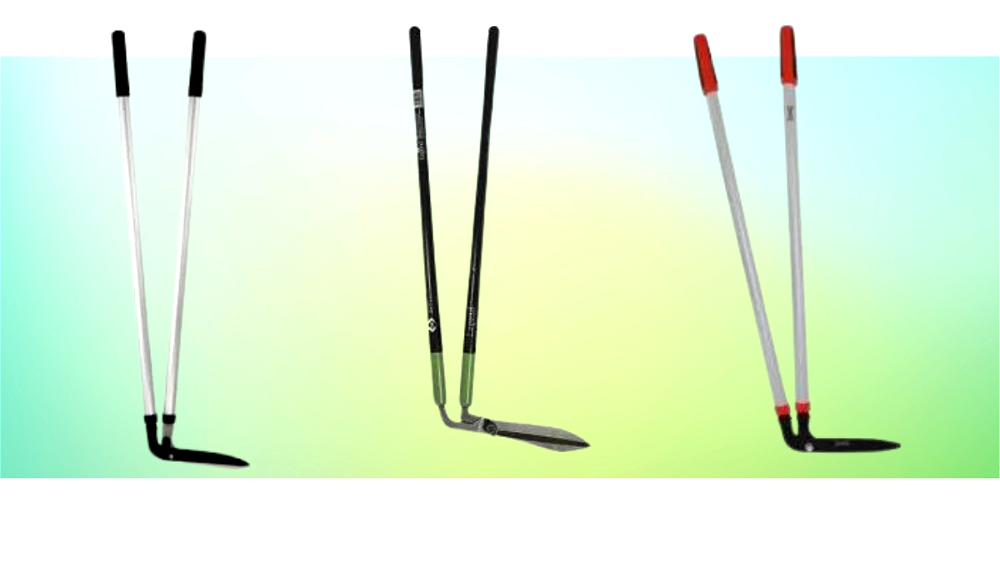
-
Carl Kammerling Heavy Duty Lawn Edging Shears
-
Bahco P75 Lawn Edging Shears
-
Wilkinson Sword Long Handled Border Edging Shears
-
Spear & Jackson Razorsharp Grass Edging Shears
-
Bulldog Premier Edging Shears
Reviews
- Extremely sharp blades that create crisp, clean cuts
- Blades are self-sharpening and continue to deliver the same clean cuts over time
- Dial on blades makes it easy to adjust tension without the use of tools
- No friction when cutting, very smooth action without blades catching on eachother
- Can be used by either right- or left-handed users
- Heavy for lawn shears - at 2.4 kg these can be quite demanding on upper body strength
- gardening gloves can help improve grip" /> No grips on handles, so rubberised gardening gloves can help improve grip
These Carl Kammerling Heavy Duty Lawn Edging Shears are particularly notable for their quality.
The 20 cm blades are drop forged and hardened with chrome plating; in real-life terms this means they are powerful blades that create a very clean cut against edges. They’re sharp, and stay that way for a long time thanks to their self-sharpening mechanism, and have a smooth cutting action.
Unlike some edging shears, that catch on themselves whilst cutting, these glide past each other without excessive friction. It’s also possible to adjust the blade tension, with a dial on the blade if necessary. No tools (like a screwdriver) are needed to adjust the tension, which makes it very easy to do.
The shears can be used by either a right- or left-handed user – they possibly favour right-handed use, but are comfortable enough to be used by a left-handed person as well.
In length, these shears measure 95 cm and have lacquered, hardwood handles that are relatively easy to hold onto. They have no grips added onto them, so wearing rubberised gardening gloves will help.
Weighing 2.4 kg, these shears are a little heavier than many others on the market and require reasonable upper-body strength to use. They also need to be used on edges that have quite a deep gully, due to the depth of the blades, and will be more difficult to use on shallow edges.
Even so, these are some of the best lawn edging shears on the market due to their quality and the results that they offer. In most gardens, they will work well to crisply neaten up grass edges – just make sure the weight will be manageable.
It would be remiss not to briefly mention the price, as they are a lot more expensive than other shears on the market; however, they are also a particularly high-quality and durable option.
Did you find this review helpful?
- Strong, sharp blades create a clean cut on lawn edges
- Very little maintenance required to keep sharp for several years - just oil on the blades
- Although design slightly favours right-handed users, can be used by either left-handed or right-handed gardeners
- Adjustable blade tension helps to maintain efficiency and sharpness
- Relatively thin blades make it possible to cut some shallower edges
- Weighing 1.9 kg, quite a lot of upper body strength is required to use shears for a prolonged time
- Handles are fairly wide at the top which can take getting used to, especially if used to using narrower shears
Bahco tools have a good reputation for quality and value, and their P75 Lawn Edging Shears are no different.
Made with 20 cm hardened-steel blades, coated with black Xylan to reduce friction, they produce a clean cut around edges and maintain their sharpness without maintenance for several years.
The tubular-steel handles are 90 cm long, and the tool measures 100 cm in total. Although they are some of the longest edging shears on the market, they may still be uncomfortable for those over 6 ft tall to use for extended periods.
Speaking of comfort, there are plastic sleeves on the top sections of the handles to help with grip, making the shears easier to hold.
An adjustable bolt makes it possible to alter the tension of the blades which is useful if they start to feel loose or could use less friction. These above factors make the shears both easy to use, and capable of creating a very clean and accurate cut.
At 1.9 kg, the P75 Edging Shears are verging on the heavier side of lawn edgers. They are not especially light, although this helps give them a robust feel, and will need a fair amount of strength to use for a prolonged time.
Overall, given the quality of these shears, and their price, they’re some of the best lawn edging shears to buy if you’re after high quality, but also value for money. They are still more expensive than a lot of shears on the market, but they have the reputation and performance to justify it.
Did you find this review helpful?
- Smaller blades than some edging shears, better for getting into tighter spaces and cutting shallower edges
- Blades are extremely sharp and cut through grass and turf with ease
- Manageable weight for the majority of gardeners whilst still being durable
- Blades retain sharpness well
- Quality mid-range price option with some characteristics of more premium shears
- The plastic grip on the handles may come loose over time and require reaffixing
- Over larger lawns, supporting the weight may still be uncomfortable for some users
- Handles may require users over 6 ft to stoop
Although they may be most famed for their razors, Wilkinson Sword do a good line in gardening tools as well, as demonstrated by their Long Handled Edging Shears. As you might expect from Wilkinson Sword, the cutting blades are particularly well designed.
Measuring 17 cm across, the blades are shorter and narrower than those of the Bahco and Carl Kammering shears, making them easier to fit into smaller areas and cut shallower edges. Made from carbon steel, with a non-stick coating, the sharp blades slice through turf and grass and create a very neat finish.
The shears weigh 1.48 kg, which is ‘midweight’ for this style of tool – there are lighter models available, but lightness can compromise durability. For the most part, these Wilkinson Sword shears are considered a manageable weight, although more rests may need to be taken depending on mobility and arm strength.
Despite being described as ‘long’, the handles measure 85 cm which is shorter than the majority of other shears featured on this page. The tool’s entire length is 94 cm, so some taller users (over 6 ft) may find they have to stoop.
There are soft grips on the tops of the handles, to make the shears easier to hold, made from a combination of thermoplastic rubber and polypropylene.
Over time, these shears continue to retain their sharpness and give a good edge in the garden. Overall, they’re some of the best lawn shears if you’re after a mid-range option – they’re cheaper than premium shears, but still have excellent durability and perform well.
Did you find this review helpful?
- A great choice for gardeners who struggle with short tools as handles are particularly long
- Quite lightweight at 1.1 kg, easy to hold and manoeuvre for prolonged periods
- Can be used by either left- or right-handed users
- Handles don't bounce when they come together
- Sharp blades create a clean, sharp edge
- Plastic grips on the handles may come loose over time and require reaffixing
- Handles may be too long for users between 5' - 5'5" (152 - 165 cm)
With a total length of 104 cm, these Spear & Jackson Razorsharp Edging Shears are a great choice for taller gardeners. Out of the edging shears featured on this page, these are the longest, and the most suitable for those over 5’10” (178 cm) tall.
Fortunately, as well as saving on backache, these shears also produce a clean edge in the garden. Part of Spear & Jackson’s ‘Razorsharp’ tool range, they have 23 cm carbon-steel blades that are extremely sharp and can be used by either left-handed or right-handed users.
The handles move smoothly, with a crisp cutting motion, and don’t catch or bounce when they come together.
Although you might expect these shears to weigh more than others – based on their longer blades and handles – they are surprisingly lightweight. Weighing 1.1 kg, they are actually the lightest shears featured here, as well as the longest.
This makes them comfortable to manoeuvre and use for prolonged periods; plus, on top of this, they have the addition of non-slip handles for better grip. As a result of these three factors, they’re some of the best edging shears in terms of comfort, particularly for taller gardeners who may have to stoop a lot when using other models.
With a smooth cutting action, durable build and sharp blades, these are a decent pair of edging shears anyway, but the fact that they are lightweight and have particularly long handles makes them a suitable choice for a lot of different gardeners.
Did you find this review helpful?
- Durable fibreglass handle
- Rubber grips cushion handle and make it easier to hold
- Very sharp blades that easily cut through tough grass
- Adjustable tension makes it easy to alter blade pressure
- Weighing 1.8 kg, reasonable upper-body strength is required to support the shears over time
- Quite a short shaft, unlikely to be suitable for taller gardeners
Offering a good combination of affordability, quality and value, these Bulldog Premier Edging Shears are some of the best edging shears to buy if you’re after a mid-range option. They’re not as expensive as premium shears, but still offer quality construction and durability.
Made by Bulldog, a company based in Wigan, UK, these shears are the only model with a fibreglass handle to have gained a spot on this list. As a lightweight but durable material, the fibreglass shaft helps with manageability. The shears weigh 1.81 kg in total.
In terms of performance, the 20.5 cm blade, made from forged manganese steel, results in a sharp cut and is easy to use to neaten lawn edges. The tension of the blades is adjustable, using a screw head positioned where the blades join.
It’s worth nothing that these shears may not be a good choice for taller gardeners, given that the handles only measure 81 cm in total; this makes them the shortest shears featured on this page – a fact that may delight some and dismay others.
The tops of the handles are coated with rubber, which provides good grip and control over the tool. If you want to avoid using electric edgers, but don’t want to spend more money than necessary on a pair of shears, these are a good option to consider.
As mentioned, their biggest downfall is the short handle length, but if that doesn’t bother you, these Bulldog shears will be a useful tool to have in the shed. Plus, they offer good quality without breaking the bank, and are produced by a reliable UK-based company.
Did you find this review helpful?
How to Choose the Best Lawn Edging Shears
If you want to elevate the appearance of your lawn after mowing, you may find that lawn edging shears are what you’ve been missing.
Even after mowing your lawn from top to bottom, the edges can still look a little wobbly and untidy.
Enter: lawn edging shears. Capable of taking your lawn from an 8 to a 10, they trim and neaten the grass at the edge of your lawn to produce a crisp finish.
Choosing the best lawn edging shears will depend on your height, budget and garden. The following information should help give you more of an idea what to look out for.
READ NEXT: Low Maintenance Lawn Edging Ideas
Standard Lawn Shears vs Lawn Edging Shears
There are several different types of shears that you can buy for the lawn. When it comes to long-handled shears, the two most popular types are lawn shears (for reducing the height of lawn grass) and lawn edging shears (for creating a crisp lawn border).
It’s easy to tell the different between the two: lawn shears have blades that protrude out to the front, at roughly a 120° angle to the handle. Lawn edging shears have blades that face sideways, to make it easier to cut along the edge.
If you’re looking to cut the tops of your grass, in places where perhaps the mower can’t reach, you’ll want lawn shears. If you want to sort out the edges of your lawn, go for lawn edging shears. You can’t easily use one type of tool for both tasks.
READ NEXT: The Best Garden Shears
Handle Length
Lawn edging shears traditionally have long handles which allow them to be used from a standing position. However, if the handle is too short or too long, it could arguably be more uncomfortable than simply working kneeling down.
If the total handle length is over 100 cm, the shears will be more appropriate for taller users, those who are approximately 5’10” (178 cm) or above. It’s also possible to get shears with a telescopic handle, but don’t instantly presume that these will definitely be longer than standard shears. A lot of telescopic shears still only extend to around 100 cm. If you’re tall, and you want to avoid stooping, take some time to compare different shears on the market. This is the best way to make sure to find shears that are comfortable.
Most other shears have a handle length ranging from 80 – 100 cm and will be suitable for the majority of gardeners.
Remember that shears with long handles (which aren’t telescopic) will require more storage space.
Weight and Manageability
Long-handled edging shears can vary dramatically in terms of how much they weigh. In some cases, very light shears may not be very robust, though this isn’t always the case.
Anything over 2 kg will likely feel heavy to most gardeners after prolonged use. Although manageable, you may want to choose a lighter tool if you get tired easily, struggle with mobility, or don’t have a lot of upper-body strength. Shears that way over 2 kg probably aren’t the best choice for larger gardens.
Shears that weigh between 1.5 – 2 kg can still prove difficult to manage for a lot of gardeners. Naturally, they are slightly more manageable, but the weight will become noticeable after a while and more rests may be required than with lighter shears.
If you would prefer to have reasonably light shears, that are still robust, you should consider models that weight between 1 – 1.5 kg. There are also lighter shears available on the market, but they may not be as robust or durable.
What Type of Blade to Look Out For
Often, lawn edging shears have blades that have been hardened and tempered for added durability.
This is good to look out for. Whilst cheaper shears can be tempting, untreated metal blades made from poor quality steel won’t cut as fluidly. You may find you’re having to work harder than you would if the blades were better quality.
Some edging shears have self-sharpening blades. The angle at which the blades work produces a small amount of friction, which means the blades sharpen with every cut.
Longer blades, measuring 21 cm + are more suitable for bigger gardens because they allow more edge to be cut in one go. However, be aware that the bigger the blade, the more depth it needs to open fully. If your verge edges are quite shallow, you may find that longer blades often end up digging into the dirt when you open them.
Shorter blades, measuring between 17 – 21 cm are better for smaller gardens and getting into more intricate areas. If your garden has shallow verges, you may find it easier to work with smaller blades.
READ NEXT: The Best Gardeners Knives
Lawn Edging Shears FAQs
Lawn edging shears are very low maintenance, but most will still require sharpening every once in a while. Before you begin, assess whether you are comfortable to sharpen the blades yourself. Shear blades are sharp and could cause serious injury if not treated correctly. If you have any doubts, take them to a professional.
With that said, it is possible to sharpen shear blades at home.
First, remove any rust from the blades with sandpaper, then clean them with warm soapy water.
To sharpen the blades, use a large single cut mill file. If you have a vice, put the shears in these to hold them still, otherwise brace them against a solid object. When sharpening, follow the angle of the blade’s edge – only sharpening the outside of the blades. Dragging the file up the blade towards you will damage the blade. Instead, it should be pushed away from you down towards the tip using a long smooth stroke. Returned to the top of the blade to start again.
Do this until the entire edge of the blade has been filed evenly, then move onto the second blade. Once finished, smooth the blades with sandpaper and oil.
After each use, clean and oil the blades. Linseed oil is one type of oil that you can use. This will stop the blades from sticking or rusting, which may cause them to go blunt over time. Although it’s not much, this is an effective way to keep the blades sharp for as long as possible.
Make sure to store the shears somewhere safe, where the blades won’t come into contact with hard surfaces that will blunt them.
Avoid using the shears for tasks that they’re not designed for. It can be tempting to lop twigs from trees, or do a spot of pruning once you’ve got a lawn edger in your hand. However, using shears for these more heavy-duty tasks will quickly dull the blade.
Loppers are made for pruning small trees and shrubs. They are generally used for branches up to 3 cm in diameter. They aren’t used for large tasks such as cutting back hedges.
Pruners are used one handed, and have a spring mechanism. They cut through smaller twigs and branches, and are commonly used for rose bushes. Bypass pruners are better for pruning flowers, while anvil pruners can be used to cut thicker branches.
Shears are used for trimming hedges or grasses depending on the type.
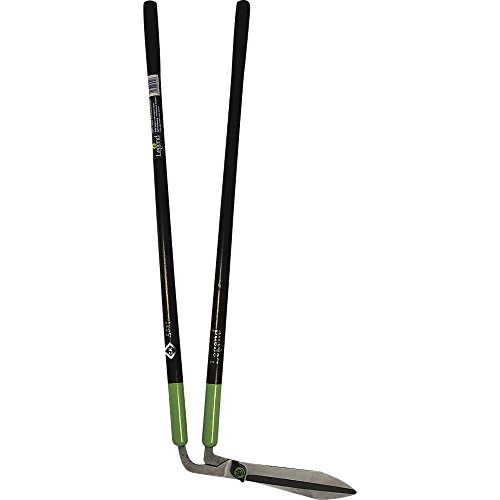
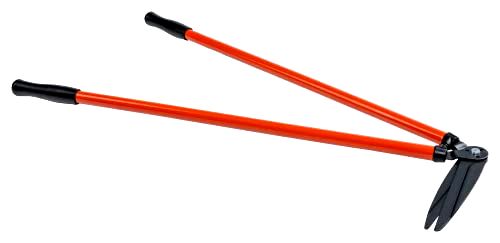
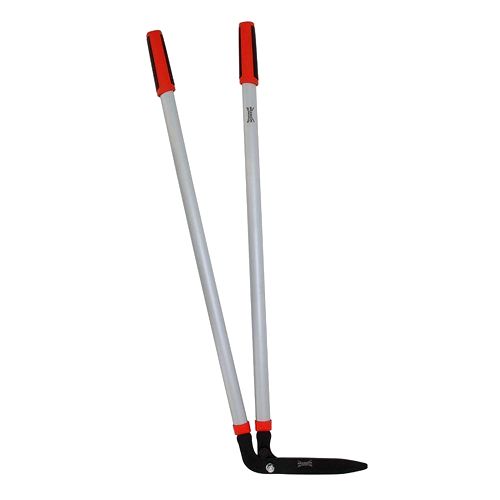
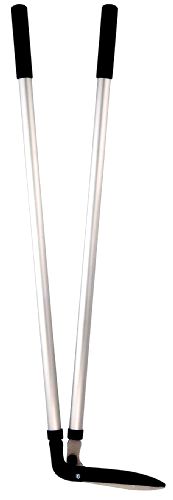
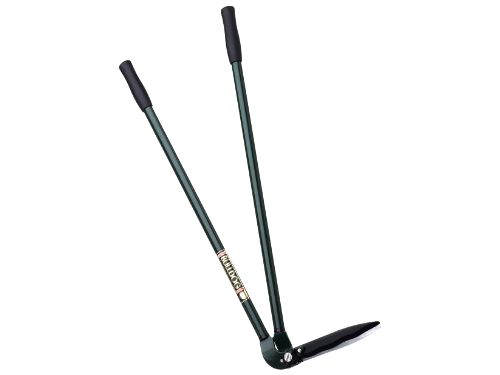

Share